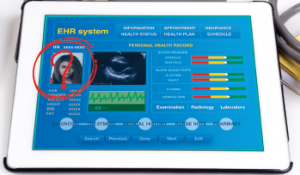
© pandpstock001; phipatbig / shutterstock.com
Wrong-patient errors (WPE) can have deadly consequences and can happen almost anywhere in the healthcare process, including patient registration, electronic data entry and transfer, medication administration, medical and surgical interventions, blood transfusions, diagnostic testing, and patient monitoring.
Explore This Issue
December 2017“WPE includes any situation in which a patient is identified incorrectly, regardless of whether the error translates into patient harm,” said Michael J. Brenner, MD, associate professor in the department of otolaryngology–head and neck surgery at the University of Michigan School of Medicine in Ann Arbor. “I emphasize ‘regardless of harm’ because the vast majority are caught before an injury occurs. However, when significant errors do occur, they can result in death or irreparable injury. At the very least, WPEs profoundly impact on a patient’s trust in our system.”
A recent publication from the ECRI Institute, a nonprofit research organization focused on improving patient care, compiled incident reports documenting 7,631 events from 181 healthcare organizations. Researchers noted that 72.3% of errors occurred during patient encounters and 12.6% at intake; additional findings included the fact that 91.4% of errors were found and corrected before any patient harm occurred (ECRI Institute. PSO Deep Dive: Patient Identification: Executive Summary.).
There is, however, little research on the incidence of WPEs in otolaryngology. In 2014, Rahul K. Shah, MD, MBA, a professor of otolaryngology and pediatrics at George Washington University School of Medicine and Health Sciences and vice president and chief quality and safety officer at the Children’s National Health System in Washington, D.C., and his colleagues surveyed members of the American Academy of Otolaryngology–Head and Neck Surgery (AAO–HNS). Of the 681 responders, 445 (66%) reported an event that shouldn’t have happened in the prior six months, from which 222 reports were extracted. The investigators identified adverse consequences in half of the events; corrective actions were reported in 82.8%. Practice pattern changes were instituted 68% of the time (Otolaryngol Head Neck Surg. 2014;150:779–784).
Dr. Shah also said that otolaryngologists are especially vulnerable to WPEs due to the wide variety of settings in which they see patients.
Multiple Environments, Multiple Systems
An additional problem is that many physicians practice in multiple environments. They spend the morning in clinic, the afternoon performing outpatient surgery, and the evening rounding on inpatients. Despite attempts at interoperability, most have their own electronic medical record (EMR) systems.
“One gets accustomed to certain systems and then gets better at using it,” said Hardeep Singh, MD, MPH, chief of the Health Policy, Quality, and Informatics Program at the Center for Innovation in Quality, Effectiveness and Safety at the Michael E. DeBakey VA Medical Center in Houston. “But if every place you went had a different medical record system, your comfort level in looking for or entering patient information would almost certainly go down.”